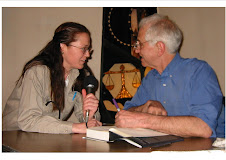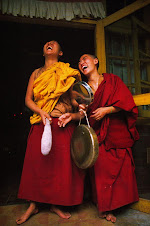
As explained by Sig Lonegren: The Winter Solstice will occur at 5:04 a.m. MST on Sunday, December 21, 2008. The solstices are the days when the Sun reaches its farthest northern and southern declinations.
 As the Earth travels around the Sun in its orbit, the apparent north-south position of the Sun changes over the course of the year. This is because the equator is tilted at 23.45 degrees to the plane of the Earth's orbit, also known as the ecliptic. So, at summer solstice in the northern hemisphere, the equator arcs below the plane of the ecliptic, and the northern hemisphere is closest to the sun. At winter solstice, it arcs above the ecliptic, and the northern hemisphere is farthest from the sun, and vice versa for the southern hemisphere. When both hemispheres are equally presented to the Sun, we have the Vernal and Autumnal Equinoxes.
As the Earth travels around the Sun in its orbit, the apparent north-south position of the Sun changes over the course of the year. This is because the equator is tilted at 23.45 degrees to the plane of the Earth's orbit, also known as the ecliptic. So, at summer solstice in the northern hemisphere, the equator arcs below the plane of the ecliptic, and the northern hemisphere is closest to the sun. At winter solstice, it arcs above the ecliptic, and the northern hemisphere is farthest from the sun, and vice versa for the southern hemisphere. When both hemispheres are equally presented to the Sun, we have the Vernal and Autumnal Equinoxes.In the northern hemisphere, the Winter Solstice is the day of the year when the Sun rises and sets farthest to the south; however, in the southern hemisphere, Winter and Summer Solstices are reversed so that the Winter Solstice is the day on which the Sun rises farthest in the northeast. In the northern hemisphere, the Winter Solstice marks the first day of the season of winter. The declination of the Sun on the (northern) Winter Solstice is known as the Tropic of Capricorn (declination -23° 27').
 Neolithic people knew about the Winter Solstice – New Grange in Ireland (sunrise) and Maes Howe in the Orkneys (sunset) are both oriented towards the Winter Solstice Sun. While the Maes Howe window is rather wide, the New Grange “light box” works for only a few days.
Neolithic people knew about the Winter Solstice – New Grange in Ireland (sunrise) and Maes Howe in the Orkneys (sunset) are both oriented towards the Winter Solstice Sun. While the Maes Howe window is rather wide, the New Grange “light box” works for only a few days.In ancient Egypt, the god-man/savior Osiris died and was entombed on December 21st. At his moment of death, the priests brought out a baby, indicating his immediate rebirth. In Greece, the Winter Solstice ritual was called Lenaea, the Festival of the Wild Women. In very ancient times, a man representing the harvest god Dionysus was torn to pieces and eaten by a gang of women on this day. Later in the ritual, Dionysus would be reborn as a baby – birth, again, being celebrated, as well as ritually eating the deity.
The festival now known as Yule originated with the Teutons and Norse, who celebrated it the night before the Solstice. The traditional Yule season is thirteen nights long, the Weihnachten. These thirteen nights mark the space between one year and another, the border where the worlds overlap. This border, Saturnalia, is also celebrated on Artemis/Diana’s birthday. Despite popular belief, Druids and the Celtic people did not celebrate the Equinoxes and Solstices as holy days, but as Cross-Quarter Days. There is no evidence for Winter Solstice celebrations in Celtic lands until after the conversion to Christianity when Christmas was introduced. The closest Celtic equivalent to Yule is Samhain. -- Sig Lonegren
























































No comments:
Post a Comment